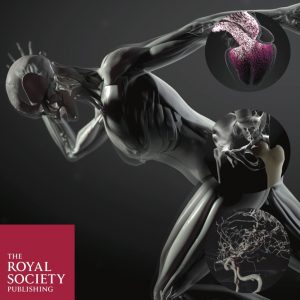We are delighted to announce that Computational Biomedicine. Part II: Organs and Systems of a two-part Theme Issue resulting from papers originally submitted to the CompBioMed Conference 2019 has now been published in The Royal Society’s “Interface Focus” journal, with articles available for all to read as open source.
Part II concentrates on organs and systems and follows from Part I: Molecular Medicine, which was published on 16 October 2020

Picture featured on the front cover of the journal and taken from the Virtual Humans Film produced by CompBioMed
In this issue you will find an Introduction by our Coordinator, Prof. Peter Coveney, describing the work that has been done and still needs to be done in the field of Computational Biomedicine and, in particular, in the area of organs and systems, which the Issue deals with.
The other articles are:
Haemodynamic flow conditions at the initiation of high-shear platelet aggregation: a combined in vitro and cellular in silico study
B. J. M. van Rooij, G. Závodszky, A. G. Hoekstra and D. N. Ku
https://doi.org/10.1098/rsfs.2019.0126
Digital blood in massively parallel CPU/GPU systems for the study of platelet transport
C. Kotsalos, J. Latt, J. Beny and B. Chopard
https://doi.org/10.1098/rsfs.2019.0116
Coupling one-dimensional arterial blood flow to three-dimensional tissue perfusion models for in silico trials of acute ischaemic stroke
R. M. Padmos, T. I. Józsa, W. K. El-Bouri, P. R. Konduri, S. J. Payne and A. G. Hoekstra
https://doi.org/10.1098/rsfs.2019.0125
A porous circulation model of the human brain for in silico clinical trials in ischaemic stroke
T. I. Józsa, R. M. Padmos, N. Samuels, W. K. El-Bouri, A. G. Hoekstra and S. J. Payne
https://doi.org/10.1098/rsfs.2019.0127
Applicability assessment of a stent-retriever thrombectomy finite-element model
G. Luraghi, J. Felix Rodriguez Matas, G. Dubini, Francesca Berti, S. Bridio, S. Duffy, A. Dwivedi, R. McCarthy, B. Fereidoonnezhad, P. McGarry, C. B. L. M. Majoie, F. Migliavacca and on behalf of the INSIST investigators
https://doi.org/10.1098/rsfs.2019.0123
Electrophysiological and anatomical factors determine arrhythmic risk in acute myocardial ischaemia and its modulation by sodium current availability
H. Martinez-Navarro, X. Zhou, A. Bueno-Orovio and B. Rodriguez
https://doi.org/10.1098/rsfs.2019.0124
The EurValve model execution environment
M. Bubak, K. Czechowicz, T. Gubała, D. R. Hose, M. Kasztelnik, M. Malawski, J. Meizner, P. Nowakowski and S. Wood
https://doi.org/10.1098/rsfs.2020.0006
Towards blood flow in the virtual human: efficient self-coupling of HemeLB
J. W. S. McCullough, R. A. Richardson, A. Patronis, R. Halver, R. Marshall, M. Ruefenacht, B. J. N. Wylie, T. Odaker, M. Wiedemann, B. Lloyd, E. Neufeld, G. Sutmann, A. Skjellum, D. Kranzlmüller and P. V. Coveney
https://doi.org/10.1098/rsfs.2019.0119
Analysis of mechanotransduction dynamics during combined mechanical stimulation and modulation of the extracellular-regulated kinase cascade uncovers hidden information within the signalling noise
G. Ascolani, T. M. Skerry, D. Lacroix, E. Dall’Ara and A. Shuaib
https://doi.org/10.1098/rsfs.2019.0136
Deep medical image analysis with representation learning and neuromorphic computing
N. Getty, T. Brettin, D. Jin, R. Stevens and F. Xia
https://doi.org/10.1098/rsfs.2019.0122

